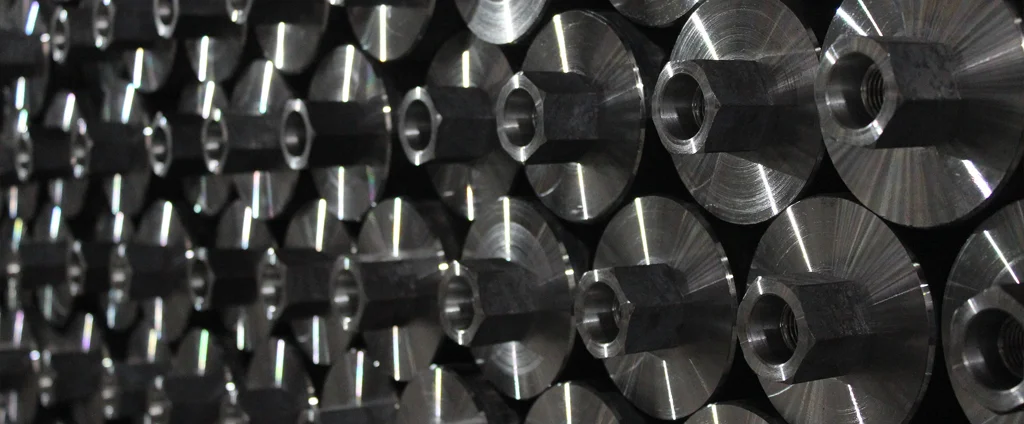SAE/AISI 1043 Carbon Steel (UNS G104300)

SAE/AISI 1043 is a medium-carbon steel that offers an optimal balance of strength, toughness, and machinability. It is commonly used in various applications, including machinery components, automotive parts, and structural elements.
| Chemical Composition | ||
|---|---|---|
| Element | Min | Max |
| Iron | 98.44% | 98.90% |
| Carbon | 0.40% | 0.47% |
| Manganese | 0.70% | 1.00% |
| Phosphorous | —— | 0.04% |
| Sulfur | —— | 0.05% |
The following table provides a list of SAE/AISI 1043 properties in both SI and US customary/Imperial units.
Click on the button to switch between Metric and Imperial units.
| Physical Properties | Metric |
|---|---|
| Density | 7700 - 8030 kg/m3 |
| Mechanical Properties | Metric |
| Tensile Strength (Ultimate) | 560 - 710 MPa |
| Tensile Strength (Yield) | 310 - 600 MPa |
| Young’s Modulus (E) | 190 - 210 GPa |
| Bulk Modulus (K) | 140 GPa |
| Shear Modulus (G) | 80 GPa |
| Elongation at Break | 13 - 18% |
| Poisson’s Ratio (ν) | 0.27 - 0.30 |
| Brinell Hardness | 160 - 200 |
| Thermal Properties | Metric |
| Thermal Conductivity | 52 W/m·K |
| Specific Heat Capacity (Cp) | 470 J/kg·K |
| Coefficient of Thermal Expansion (αL) | 1.2×10-5 1/°C |
| Electrical Properties | Metric |
| Electrical Conductivity | 4.1×106 S/m |
| Electrical Resistivity | 2.4×10-7 Ω·m |
The values in this table are approximate and can vary depending on various factors such as the specific manufacturing process and heat treatment applied to the alloy.
Advantages & Disadvantages of 1043 Carbon Steel
| Advantages | Disadvantages |
|---|---|
| Good strength and toughness | Limited hardenability |
| Good machinability | Lower wear resistance |
| Good weldability | Susceptible to corrosion |
| Cost-effective |
Applications of 1043 Carbon Steel
SAE/AISI 1043 carbon steel is widely used across industries where strength, toughness, and cost-effectiveness are essential. Common applications include:
- Machinery Components: Used in the manufacturing of gears, shafts, bolts, nuts, and other machine parts.
- Construction and Structural Components: Employed in structural elements like beams, columns, and support brackets in construction projects.
- Automotive Parts: Common in the production of axles, crankshafts, connecting rods, and steering components for the automotive industry.
- Fasteners: Frequently used for screws, bolts, and studs that provide strength and reliability in fastening applications.
- Tools and Tooling Components: Used for creating tools and components such as punches, dies, drills, and cutting blades.
- General Industrial Applications: Applied in manufacturing pipe fittings, flanges, couplings, and other machinery components.
